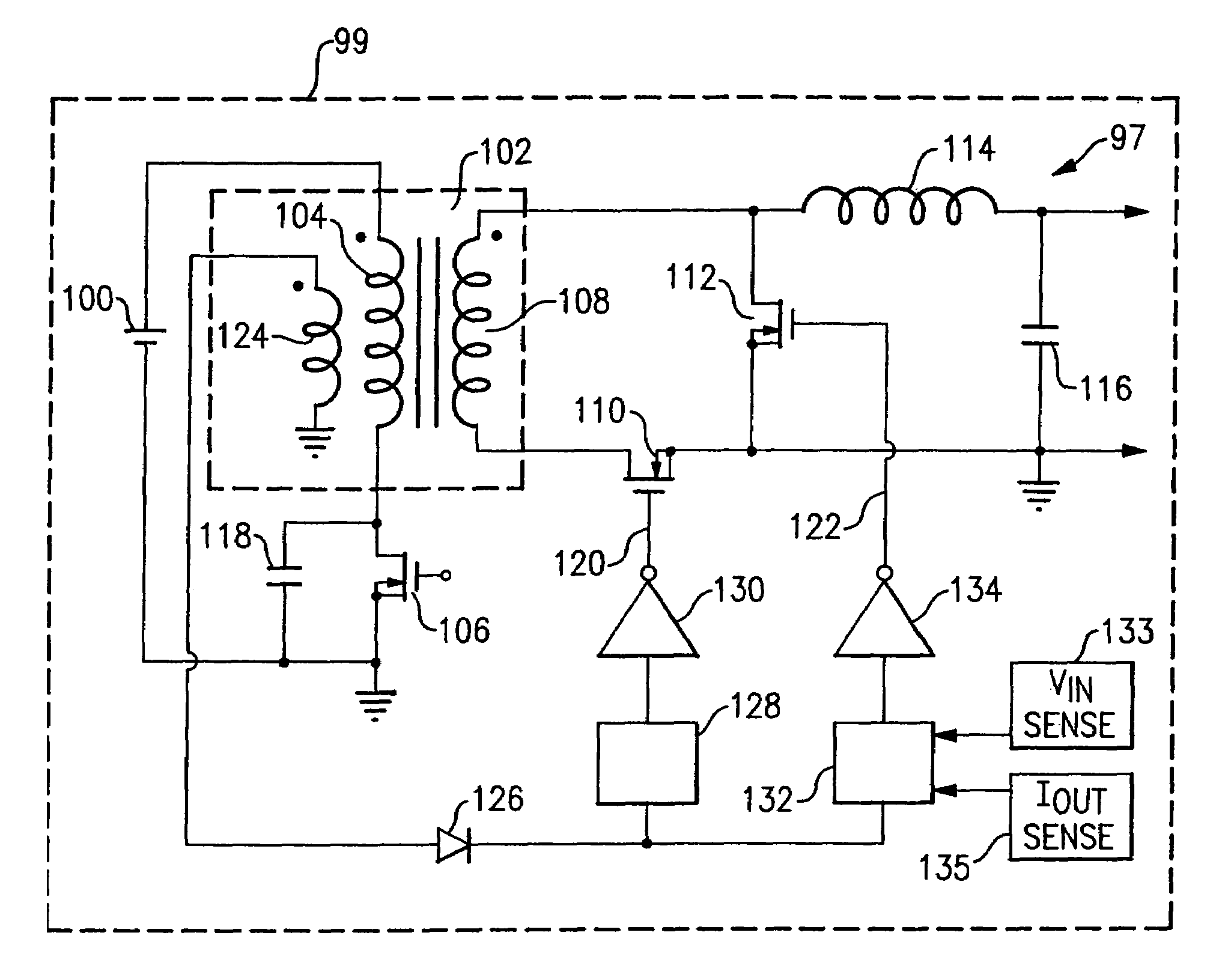Drive circuits for synchronous rectifiers
- Summary
- Abstract
- Description
- Claims
- Application Information
AI Technical Summary
Benefits of technology
Problems solved by technology
Method used
Image
Examples
Embodiment Construction
[0040]Prior to describing various illustrative embodiments of the invention, the present invention may be better appreciated with reference to FIG. 1, which schematically depicts a conventional resonant reset forward converter, which includes a transformer 102 having a primary winding 104 connected in series with a DC power source 100 (of voltage Vin) and a primary transistor 106, which has an associated parallel capacitance 118. Secondary winding 108 of transformer 102 is connected in series with a forward rectifier 110, and this series connection is connected in parallel with a freewheel rectifier 112. Forward rectifier 110 and freewheel rectifier 112 are situated to permit current flow to the converter output through filter inductor 114 at one end of filter capacitor 116. It may be appreciated that capacitance 118, sometimes referred to as a snubbing capacitance, schematically represents intrinsic capacitances (e.g., parasitic capacitances) as well as any extrinsic capacitances (...
PUM
 Login to View More
Login to View More Abstract
Description
Claims
Application Information
 Login to View More
Login to View More - R&D
- Intellectual Property
- Life Sciences
- Materials
- Tech Scout
- Unparalleled Data Quality
- Higher Quality Content
- 60% Fewer Hallucinations
Browse by: Latest US Patents, China's latest patents, Technical Efficacy Thesaurus, Application Domain, Technology Topic, Popular Technical Reports.
© 2025 PatSnap. All rights reserved.Legal|Privacy policy|Modern Slavery Act Transparency Statement|Sitemap|About US| Contact US: help@patsnap.com



